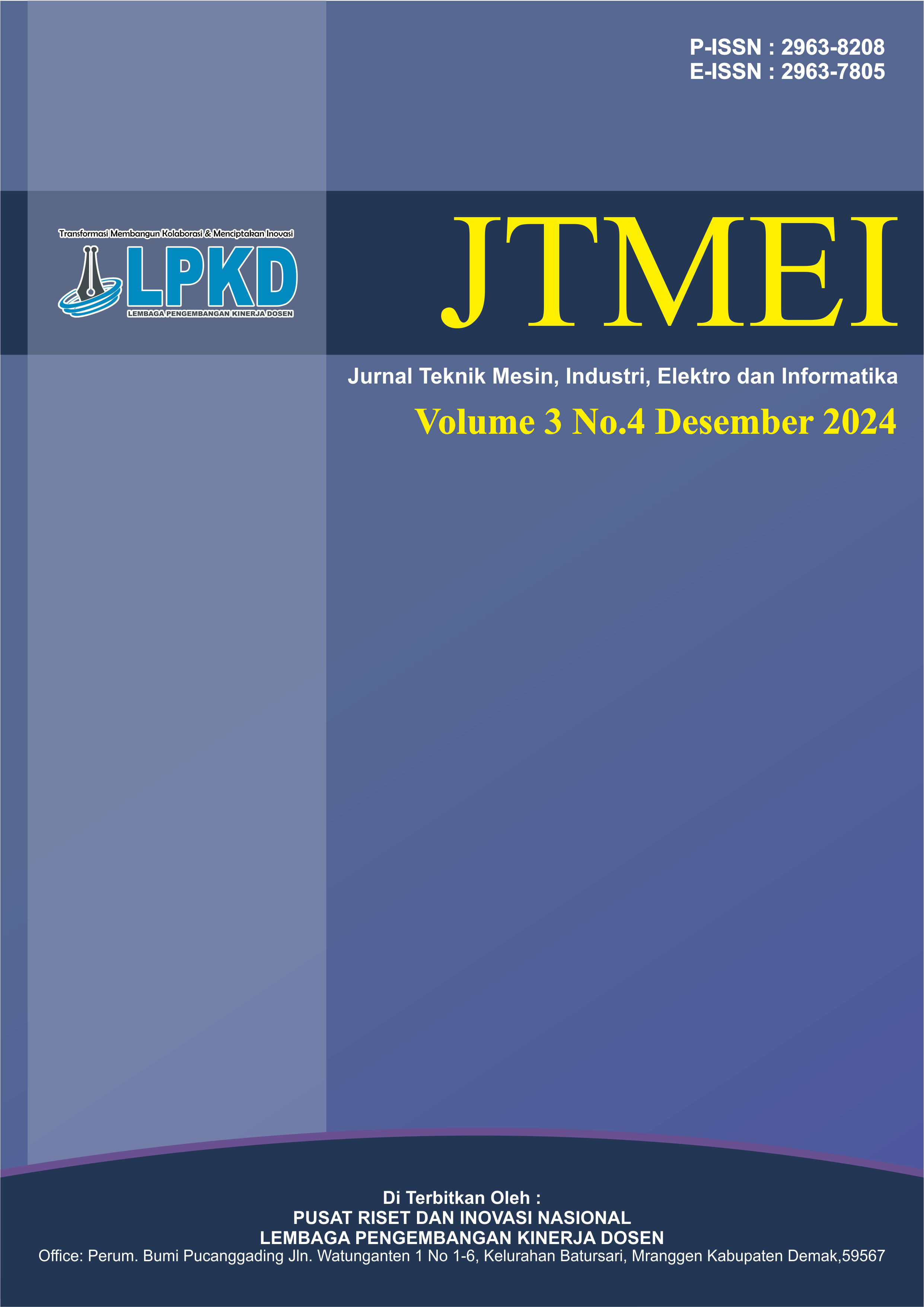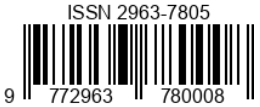Pengaruh Tekanan Gas pada Proses Thermal Spray Aluminium (TSA) terhadap Keausan dan Morfologi Pada Baja ST 60
DOI:
https://doi.org/10.55606/jtmei.v3i4.4391Keywords:
Thermal Spray Aluminum (TSA), Hardness, Wear, Steel St 60Abstract
The use of steel in industry continues to increase until now making it the material most often used in transportation equipment such as cars, ships and trains. Steel is used in the transportation construction industry, steel materials are often used for railway axle construction. Hardness values were taken using the Vickers micro test, and wear using a taber abrasive tool. Based on this background, research will be carried out "The Effect of Gas Pressure in the Thermal Spray Aluminum (TSA) Process on the Hardness and Wear Resistance of ST-60 Steel". This research uses medium carbon steel material with a coating process via TSA. The resulting layer is expected to have better hardness and wear values. The research method used in this research is the experimental method. The experimental method is a method used to test the effect of a treatment on the object under study by comparing when treatment is carried out and without treatment. This research carried out tests on 15 test objects. The substrate material used is ST 60 steel. In the thermal spray process three variations of gas pressure are used, namely 3 Bar, 6 Bar, and 9 Bar. Hardness values were taken using the Vickers micro test, and wear using a taber abrasive tool. The highest average value of layer wear occurred at a pressure variation of 4 Bar with a layer thickness of 0.00859 mm2/kg. The lowest average layer wear value occurred at a pressure variation of 3 Bar with a wear value of 0.00729 mm2/kg. Meanwhile, based on coating layer thickness testing, the highest average layer thickness value occurred at a pressure variation of 4 Bar with a layer thickness of 423.854 µm. The lowest average layer thickness value occurred at a pressure variation of 3 Bar with a layer thickness of 241.505 µm.
Downloads
References
Afandi, Y. K., Arief, I. S., & Amiadji. (2015). Analisa Laju Korosi pada Pelat Baja Karbon dengan Variasi Ketebalan Coating.
Aziz, G. F (2016). Pengaruh Jarak Nozzle Terhadap Ketahanan Korosi dan Ketahanan Abrasi Pada Proses Thermal Spray Aluminium Material API 5L Grade B
Dwipayana, Widiyarta, I. M., & M. S. (2018). Kekerasan Baja Karbon Sedang dengan Variasi Suhu Permukaan Material. 44.
Fitriyana, D. F., Nugroho, S., & Barutama, M. R. (2021). Pengaruh Tekanan Udara Pada Proses Pelapisan 95MXC Dengan Metode Twin Wire Arc Spray Terhadap Kekerasan dan Ketahanan Aus Pada Stainless Steel 304.
Jatmiko, S., & Jokosisworo, S. (2021). ANALISA KEKUATAN PUNTIR DAN KEKUATAN LENTUR PUTAR POROS BAJA ST 60 SEBAGAI APLIKASI PERANCANGAN BAHAN POROS BALING-BALING KAPAL.
Downloads
Published
How to Cite
Issue
Section
License
Copyright (c) 2024 Jurnal Teknik Mesin, Industri, Elektro dan Informatika

This work is licensed under a Creative Commons Attribution-ShareAlike 4.0 International License.








